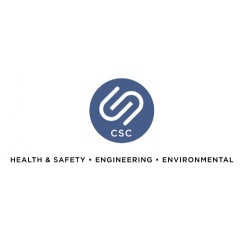Building Science Professionals Protect the Public from All Too Common Indoor Pollutants and Exposure Hazards
Clark Seif Clark (CSC) provides testing, monitoring and consulting services to protect workers and families from all types of microbial and chemical contaminants.
The presence of measurable concentrations of one or more common indoor pollutants is virtually certain in buildings. The key to protecting health is preventing a change in their condition or quantity from merely detectable to dangerous.
Most people spend the vast majority of their day indoors. Whether at home, in the office or attending school, many spend upwards of 90% of their time in indoor environments. With so much time inside buildings, the quality of the indoor environment and air people breathe is a key component of their health and safety.
All too often, indoor pollutants and contaminants can cause exposure concerns that threaten to degrade the indoor environmental quality (IEQ). Some of the more commonly encountered IEQ exposure issues include the following:
Mold In buildings that have suffered water damage or elevated humidity levels, mold can begin to grow in as short as 48 hours. Mold can cause respiratory issues, allergies, infections, trigger asthma in some people and potentially expose them to mycotoxins.
Bacteria Many types of bacteria can be found on surfaces and even at times in the air people breathe. From E. coli and Legionella, to a growing number of drug-resistant superbugs, such as MRSA and C. diff, many can cause potentially serious issues.
Allergens Everything from pollen and mold spores to latex, rodent, cockroach and dust mite allergens are frequent contributors to indoor air quality (IAQ) and can cause respiratory problems for building occupants.
Radon In many parts of the country, elevated radon levels can be found indoors making it a potential invisible threat. Radon is the second leading cause of lung cancer after smoking, and is odorless, colorless and tasteless.
Carbon Monoxide This odorless and colorless gas can build up indoors and poison people who breathe it. It is the result of combustion and comes from sources such as fireplaces and stoves, furnaces, generators, water heaters and lanterns powered by fossil fuels.
Volatile Organic Compounds (VOCs) Many building materials, furnishing and products used indoors emit volatile organic compounds such as formaldehyde. Exposure to elevated levels of a number of different VOCs may have short- and/or long-term adverse effects.
Asbestos - This mineral fiber was commonly, and to a lesser extent still is, added to many building materials and products to strengthen them and to provide heat insulation and fire resistance. Exposure to asbestos fibers can cause lung cancer, asbestosis and mesothelioma, sometimes decades after exposure.
Lead Many homes and buildings constructed before 1978 contain lead-based paints. As these materials age and degrade, or during renovation, remodeling and demolition activities, they can become airborne and settle on surfaces as dust. Lead can also be found in the water in some homes and buildings due primarily from it leaching from plumbing materials and fixtures that contain lead.
The presence of measurable concentrations of one or more common indoor pollutants is virtually certain in buildings. The key to protecting health is preventing a change in their condition or quantity from merely detectable to dangerous, said Derrick A. Denis, Vice President of IEQ for Clark Seif Clark (CSC). For over 30 years, CSC has assessed indoor environmental quality concerns for homeowners, property managers, facility managers, engineers, business owners, healthcare administrators and others to identify and resolve imbalances in their IEQ. Workers, families, students and the general public all deserve acceptable indoor environments, which we define as: compliant with applicable laws, free of hazards at concentrations of concern, and as good or better than outdoors.
To provide additional information on this important topic, CSC recently sponsored an educational video about common IEQ exposure risks that can be seen at: https://youtu.be/u7K8RVwbRAQ
To learn more about this or other indoor air quality, occupational, building science, environmental, health and safety services, please visit www.csceng.com, email csc@csceng.com or call (800) 807-1118.
About Clark Seif Clark
CSC was established in 1989 to help clients in both public and private sectors address indoor air quality, occupational, environmental, and health and safety (EH&S) issues. CSC is a leading provider of these services with multiple offices along the western seaboard and southwest. The company believes in science-based protocols and has a strong background in engineering, making them the preferred environmental consultants to industrial clients, healthcare facilities, architects, schools, builders, contractors, developers and real estate professionals.
( Press Release Image: https://photos.webwire.com/prmedia/12710/235643/235643-1.jpg )
WebWireID235643
- Contact Information
- Paul Cochrane
- President
- Cochrane & Associates, LLC
- Contact via E-mail
This news content may be integrated into any legitimate news gathering and publishing effort. Linking is permitted.
News Release Distribution and Press Release Distribution Services Provided by WebWire.

